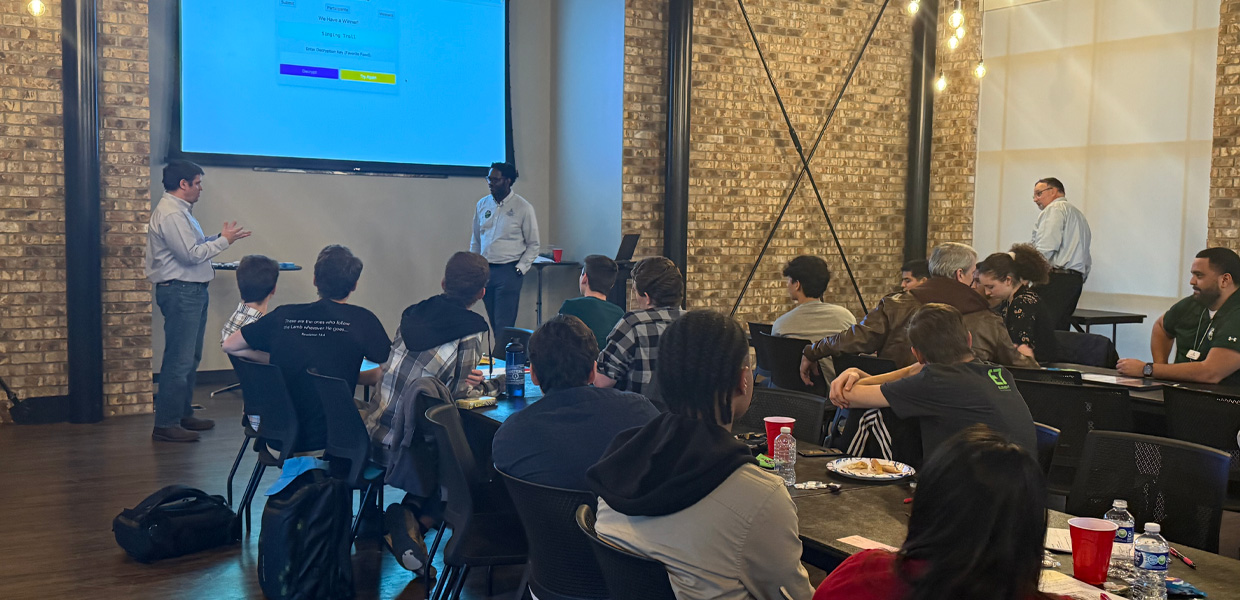
Technology’s awesome power to connect people is a cause of celebration for the Church. It has enabled us to reach people from all corners of the Earth, and has allowed us to minister to people about Christ’s love who may not be near or able to reach out to any of our communities in person.
Every day the Gospel is being spread with the aid of technology. Church services use computers to aid in worship and sermons: sound systems, PowerPoint presentations, and videos have become common aids for pastors and congregations everywhere. Sermons are being recorded and uploaded for anyone to watch and share online. Anyone who is blessed by a sermon can send it to their friends and family, who can also pass it on — until hundreds, if not thousands, will have experienced the same worship service, even while living in a different city, state, country, or continent. With the rise of artificial intelligence (AI) tools, sermons will soon be easily translated into other languages, making every church able to minister globally in ways that were only a dream little more than 10 years ago.
Technology has also transformed work across our schools and conferences. With the increase in how vital our computer systems are to our mission, the Southern Union has expanded the ways we support our schools and conferences to include their technological needs. Many of our schools have integrated technology into their teaching process, augmenting our educators’ lessons and greatly expanding the resources available to our students. Students can now assist our schools from anywhere in our states, receiving an Adventist education and meeting like-minded peers thanks to our schools’ robust online learning programs. Video conferencing has enabled our pastors, church officers, and educators to collaborate with each other much more efficiently than before. Meeting together no longer requires long drives and hotel stays across our Union’s states, but instead meetings can be quickly planned, and collaboration can be done online, helping plan our Camp Meetings and evangelistic campaigns, and helping our educators work together to develop the education standards our Adventist school system uses.
The Union’s technological initiatives have expanded to support the growing use of technology. The Union now provides many of our events with the computer and audio-visual equipment necessary to make these meetings exceptional. Many of the schools in our conferences have requested and received help in installing, repairing, or updating the network equipment required to support technology in the classroom and protect our students’ as they access online resources. Our schools and conferences are provided technical advice and assistance in managing, installing, and acquiring resources like software and hardware upon request. They can opt in to our professional-grade backup services, allowing them to recover from equipment failure, cybercrime, or disasters without any loss of work or data, and with minimal downtime during the recovery period. We are actively keeping the digital safety of our students’ data and departments’ digital files in mind, proactively implementing industry standard cyber security practices, and, equally as important, conducting regular cyber security training for our staff.
The increase in technology use has brought many opportunities, but also new challenges. The power to connect people has also allowed malicious actors like cybercriminals greater access to targets than ever before. Unlike popular depictions, hacking is not just someone typing away furiously at their keyboard. Cybercriminals most often rely on social deception to make their schemes work. Breaching systems, hacking into computers, and compromising accounts through technological prowess alone is slow, costly, and inefficient. As technology evolves, it is harder for the average person to keep up with the rapid pace of change, and cybercriminals exploit this to a great effect. Sending an email or a text message or a robocall to millions of people is essentially free and very likely to result in hundreds of victims, making this a low effort, highly profitable venture. Victims may have their information stolen, sometimes including giving criminals bank account access, sensitive data like SSNs and medical information, and access to their email or messaging accounts, allowing them to then target the victim’s contacts while pretending to be the victim, exploiting trust.
Because the risks are great, being able to recognize when you are being targeted by a cybercriminal is essential. When using social deception, cybercriminals rely on age-old methods to trick their victims into freely giving up the information or access they will use for further harm. In most cases, cybercriminals will contact their victims through email, social media messages, text messages, or robocalls. In their communications, they will usually request the victim perform an action, like reply with certain information, open a link, call a phone number, or open an attachment. They will get their victims’ attention and manipulate them into acting by evoking one or more of these feelings:
Urgency:
By creating a situation where you must act soon or face (false) negative consequences, criminals create a sense of urgency. Victims will act quickly to resolve the problem, following the criminal’s instructions without first verifying the identity or intentions of the sender. This is most commonly seen in communications regarding account access or suspension, unexpected online payments or orders, warnings about devices being infected with viruses, and unpaid toll or traffic ticket scams.
Trust:
By impersonating a trusted figure, criminals will attempt to gain their victims’ trust, lowering their guard and making them more likely to take the contents of the message at face value. Criminals will often send communications claiming to be from well-known sources, ranging from well-known websites like Netflix or Amazon, to trusted public figures or organizations, or even the impersonation of friends and family by creating fake accounts on social media.
Opportunity:
By sending a message that is just too tempting to resist, criminals ask their victims to follow their instructions for some type of gain. This type of scam ranges anywhere from offering deals that are too hard to pass up, jobs that are too good to be true, or just the promise of an entertaining photo or video if you just “click this link here.”
Cybercriminals are constantly perfecting their scams and making their deceptions harder to detect, but there are some surefire ways to identify whether communications are real or fraudulent.
Unexpected messages:
Fraudulent warnings about infected devices, offers and deals too good to pass up, or unusual requests from family or friends may look legitimate, but usually come unprompted and out of the blue.
Unusual sender addresses or links:
When in doubt, double check the sender. Suspicious text messages may come from unrecognized numbers. Scam emails may come from similar, but incorrect sources. For example, a fake Amazon email may show the sender as “Amazon Customer Support,” but instead of coming from an @amazon.com address, the actual email address may be an unexpected @gmail.com address (@gmail.com and similar are usually for personal or very small business use) or @amazon-accounts.com (looks similar to @amazon.com, but is incorrect).
Irregular methods of contact:
Most organizations such as health insurance, local government and law enforcement, and banks prefer to send their official communications through regular mail. Cybercriminals prefer using electronic methods of delivery. When in doubt, contact the sender, but do not use the provided contact information included in suspicious communications.
Though the threats may seem great, we should not be discouraged from using technology to its fullest! By understanding the risks, practicing online safety, and being cautious with online communications, we can all stay secure online. With safety in mind, we can use technology and the internet without fear and for the great things it enables — learning, connecting with friends and loved ones, and aiding us in spreading the Gospel to all corners of the Earth in a way that has never been possible until now.
is the network security administrator for the Southern Union Conference.
Southern Union | October 2025



Comments are closed.